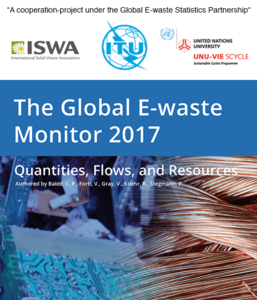
UNU’s latest Global E-waste Monitor claims a loss of materials valued at 55 billion EURO due to insufficient e-waste management
Although e-waste management has made its way to most of the world’s governments’ agendas, the latest report from the United Nations University (UNU) on global waste volumes from electronic and electric products and their treatment unveils continuous shortfalls all over the world.
Expectably, e-waste volumes generated are still on the rise and reported at almost 45 million tons in 2016 on a global scale. Based on a growth estimated at 3 to 4% per year, forecasts for 2021 assume a total amount of 51,2 million tons of e-waste worldwide.
Only 20% of the volume generated in 2016 has been reliably reported as professionally recycled, another 4% was found in residual waste, mostly in richer countries. Sadly, the fate of the predominant majority of the material (76%) remains unknown. Possible options are landfill, subject to scrap dealing or substandard recycling.
After the latest inception of relevant laws in India and other countries, e-waste management is now legally framed in 67 countries in the world, covering 66% of the world’s population. However, the effectiveness of those laws varies tremendously depending on implementation and enforcement.
Looking at the consequences, the UNU analysis does not only highlight negative impacts on the environment. The report also estimates an accumulated financial loss of around 55 billion Euros per year because materials are not sufficiently recovered and often not recycled according to up-to-date standards.
The full report is available for download here >
